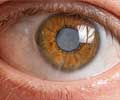Aravind Eye Care System has adopted an environment-friendly model that reduces 96% of carbon emission while conducting cataract surgery.

TOP INSIGHT
Shorter surgery durations; better re-use of surgical gowns, caps, booties, and blankets; multi-use pharmaceuticals; and more efficient sterilization of stainless steel instruments reduced green house emissions.
"Our overuse of disposable materials in surgery is unsustainable," says study leader Cassandra Thiel, PhD, assistant professor in the Department of Population Health at NYU School of Medicine. "Ophthalmologists and other medical specialists should seek ways to reduce material use and emissions in medical procedures. This center in India can serve as a model."
How One Hospital in India Slashed Emissions
From November 2014 through February 2015, the researchers analyzed surgical materials, energy, and waste from cataract surgery, calculating their greenhouse gas emissions, as well as emissions related to ozone depletion, water eutrophication, toxicity, and air pollutants. For the same procedure, the authors found that Aravind emitted just four percent of the emissions as that of a comparable operation in the U.K.
Specifically, Aravind's emissions per surgery amounted to 6 kilograms of carbon dioxide equivalent compared to 160 kilograms of carbon dioxide equivalent in the U.K. The authors draw a comparison of driving just 14 miles, compared to 391 miles. The authors believe proportions would be similar, if not greater in the U.S.
What High-Income Countries Can Learn
If India's ophthalmologists used the U.K.'s current surgical methods to achieve its goal, it would emit the same greenhouse gases as 250,000 passenger vehicles' yearly mileage, say the studies authors. However, if India employed Aravind's approach, it would only emit the same greenhouse gases as 9,000 passenger vehicles.
"As healthcare systems and professionals worldwide become more aware of and concerned for the public health implications of climate change and excessive resource use, efficient care delivery models must be better understood and promoted," says Dr. Thiel.
"Aravind's model for surgery--its use of reusable instruments, energy-efficient appliances and air handling systems, and investment in low-carbon energy sources--serves as an example of more sustainable, efficient cataract surgery," adds senior author Joel S. Schuman, MD, chair of the Department of Ophthalmology at NYU School of Medicine.
Source-Eurekalert
 MEDINDIA
MEDINDIA



 Email
Email




